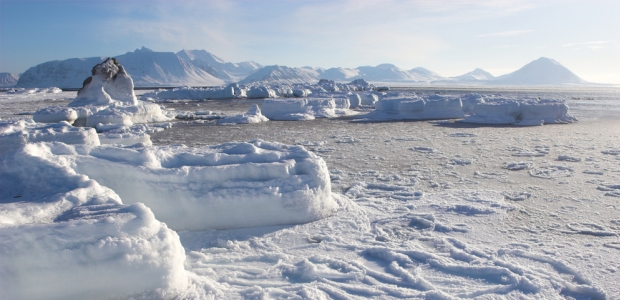
The Missing Heat
A new study by scientists at the University of Ottawa and the University of York explains why global climate models missed a rise in global temperatures.
Global News reported in November 2013 that a study conducted by scientists Kevin Cowtan of the University of York and Robert Way of the University of Ottawa explains the "pause" in global warming indicated in data, graphs, and climate models is in part due to the failure to record Arctic temperatures during the past 15 years.
Many climate change skeptics defer to data indicating a pause in global warming since 1997, which show temperatures from 1997 to 2010 barely rose. Because of the "flat-line" data, actual observation of climate changes, including melting polar ice, severe storms, and rising sea levels, is dismissed.
Surface temperatures are effectively measured over only 84 percent of the Earth, with a lack of weather stations in the Arctic and Antarctic in particular. Dr. Kevin Cowtan of the University of York, along with Robert Way of the University of Ottawa, who is a Ph.D. candidate and cyrosphere specialist--someone who studies ice--Cowtan used satellite data to fill in the missing gaps.
"It was well known within the scientific community that there were issues in terms of coverage of how many weather stations were available both in the north and south pole," Way told Global News. "People know the Arctic is warming in a series of ways; you can see it in weather models, you can see it in satellite temperatures of the atmosphere…even in weather balloons and even the few isolated weather stations were showing a really rapid warming. But in terms of finding the best way of filling in the gaps of coverage, that was the challenge."
Cowtan and Way used the dataset from the Met Office in the United Kingdom, which had incomplete data. "In our study, using their same record and using satellite data which do have that polar coverage, that there's significant air temperature change that's being missed that can have a very big influence on temperature trends over the past 15 years," said Way.
Their results found that the surface air temperature rose more than double from current models missing that data.
The 1997-2010 models that didn't include satellite data showed a temperature increase of just 0.05 C. But when satellite data were incorporated into a model, the difference increased to 0.12 C.
The new data Cowtan and Way have compiled help to provide a more complete dataset that climatologists can use when modeling climate change. The incomplete data aren't meant to say that global warming has increased, only that it hasn't stopped, as some believe.